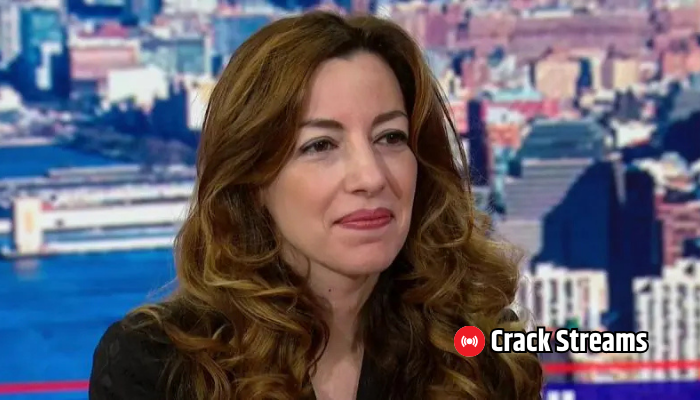Social media has changed the way we see fame. It’s no longer about Hollywood stars or big-name celebrities. Now, anyone with a smartphone and charisma can become an influencer. TikTokers, YouTubers, and Instagram stars are shaping trends, opinions, and even politics. But not everything that glitters on our screens is gold.
While many influencers inspire and entertain, others take things too far. From risky pranks to misleading their followers, some chase fame at any cost. This darker side of influencer culture is often hidden behind filters and flashy edits. But it’s real—and it’s growing.
This article dives deep into the ugly truth behind social media fame. We’ll explore dangerous stunts, child exploitation, fake followers, and more. Along the way, we’ll highlight real cases, legal battles, and the emotional toll it takes on everyone involved.
So, what really happens when influencers go wild? And what can we learn from their missteps?
The Pursuit of Virality: Dangerous Trends and Reckless Behavior
In the race to go viral, many influencers are pushing the limits—sometimes too far. Some of the most outrageous and dangerous stunts start as trends on TikTok or Instagram. For example, the “Benadryl Challenge” encouraged teens to take high doses of medication, leading to hospital visits and even deaths. All for a few likes.
Others fake elaborate pranks that quickly spiral out of control. A YouTuber once staged a bank robbery prank with friends wearing ski masks. It caused real panic and led to police involvement and criminal charges. This isn’t harmless fun—it’s irresponsible behavior with real-world consequences.
Sometimes, creators even put their own lives at risk. From climbing skyscrapers to faking kidnappings, the need to shock an audience becomes more important than safety. The problem? These stunts are rewarded with views and new followers.
Even everyday content like “social experiments” can cross the line. Some pranksters have mocked the homeless or staged fights in public spaces, causing fear and confusion. These aren’t just bad jokes—they’re examples of how far people will go for attention.
And let’s not forget the copycats. Once a stunt goes viral, countless others jump in to try it themselves, creating a cycle of dangerous behavior. The more shocking the content, the more likely it is to trend. But at what cost?
Exploitation and Abuse: The Dark Side of Family Vlogging and Kidfluencing
When kids become content, the line between parenting and profiting can blur. Family vlogs seem innocent—daily routines, birthday parties, sibling squabbles. But some have faced serious allegations of exploitation. Take Tiffany Smith, the so-called “momager” behind Piper Rockelle. She was sued by 11 teens for abuse and ended up paying a $1.8 million settlement.
Children in these videos often have no say in whether they want to be online. Imagine growing up with your most embarrassing moments broadcast to millions. Many kids don’t even understand how famous they are—or how much money they’re making for their parents.
Legally, there’s a gray area. In Utah, a new law is being proposed to protect young influencers. It would require that a portion of their earnings be set aside until they turn 18. This bill was inspired by the disturbing Ruby Franke case, where a mommy blogger was arrested for child abuse.
Beyond money, there’s the emotional toll. Being filmed constantly can make kids feel like they’re living in a performance. The pressure to be cute, funny, or well-behaved doesn’t go away when the camera turns off.
And if a child wants to quit? Too bad. Some families rely on their kid’s content for income. It’s no longer about what’s best for the child—it’s about maintaining a brand.
Deception and Fraud: Scams Within Influencer Marketing
Influencers often promote brands, products, or causes. But not all endorsements are real. Fake giveaways are a huge issue. Some influencers run contests to boost followers and never announce a winner. It’s an easy way to trick people into sharing or commenting—but it’s unethical.
There are also staged acts of charity. Picture an influencer handing out money or food to the homeless—only for the camera. Sometimes they even ask for the money back after filming. It’s less about kindness and more about content.
Then there’s financial fraud. Several influencers have promoted pump-and-dump crypto schemes. They hype up a coin, get their fans to invest, then pull out and leave everyone else with losses. It’s like a digital pyramid scheme, disguised as influencer advice.
Drop-shipping scams are another major concern. Influencers team up with suppliers to sell cheap items at huge markups. The products are often low quality, delayed, or never delivered. And once customers complain? The influencer disappears.
Common influencer scam tactics include:
- Promoting fake giveaways
- Selling overpriced or undelivered products
- Faking philanthropy for clout
- Endorsing risky financial investments like crypto or NFTs
This erosion of trust damages the entire influencer industry. Brands, platforms, and fans all suffer when a few bad actors poison the well.
The Illusion of Popularity: Fake Followers and Engagement
On social media, numbers are everything. More followers means more influence. So it’s no surprise that many influencers fake their stats. They buy followers, likes, and even comments to seem more popular than they really are.
It works—at first. Brands use these numbers to decide who to sponsor. But when influencers lie about their reach, it leads to wasted money and failed campaigns. In some cases, companies have spent thousands on influencers who had almost no real audience.
Fake engagement also fuels imposter syndrome. New creators feel pressure to match the numbers of their peers, not knowing those numbers are fake. It creates a toxic cycle where no one feels good enough.
There are even online services that guarantee a certain number of views, likes, or subscribers for a price. It’s not illegal—but it is dishonest.
And fans? They’re being fooled too. People often follow influencers because they seem “popular.” But when that popularity is a lie, the entire relationship is based on fiction.
Cultural Insensitivity and Offensive Content
In the rush to create content, some influencers ignore basic decency. Cultural appropriation is one of the most common offenses. Influencers wear traditional attire, mimic accents, or copy customs for entertainment—often without understanding or respecting their meaning.
Then there are the so-called “social experiments.” Some creators stage fake interactions involving disabled individuals or minority groups to gain sympathy—or laughs. It’s offensive, manipulative, and harmful.
Insensitive jokes can destroy careers overnight. Influencers have been canceled for mocking tragedy, making racial slurs, or downplaying serious issues. While apologies follow, the damage is already done.
Some even treat sacred places like tourist attractions. For example, posing for photos in religious sites or making jokes in memorials. The goal? Shock value.
Here’s the problem: many fans don’t hold them accountable. If the views stay high, so does the influencer’s ego. Until platforms step in or public backlash erupts, the cycle continues.
Mental Health Struggles Behind the Screen
Being an influencer may look glamorous, but behind the scenes it’s a pressure cooker. Constantly creating content, watching analytics, and dealing with trolls—it’s a lot. Burnout is real and widespread.
Many influencers admit they feel anxious, depressed, or disconnected from reality. Their lives revolve around likes and shares. And if a post flops? It can feel like a personal failure.
The pressure to stay relevant can lead to extreme measures. Some post constantly, while others reveal too much of their personal lives. Privacy becomes a luxury they can’t afford.
Public breakdowns aren’t uncommon. Crying on camera, fighting with fans, or rage-quitting the platform—these aren’t just stunts. They’re signs that many influencers are mentally struggling.
Warning signs of influencer burnout include:
- Posting excessively or going silent for long periods
- Talking about “quitting” frequently
- Sudden content shifts or emotional outbursts
Platforms need to offer more support. But fans also need to understand: behind the screen is a real person, not a machine.
Regulatory Challenges and Legal Repercussions
Unlike traditional celebrities, influencers often operate in legal gray areas. Many don’t disclose sponsored content properly, violating FTC guidelines. Others promote products that are unsafe or misleading.
Some end up in serious legal trouble. In 2024, influencers Alyssa Sheil and Sydney Nicole Gifford were sued by a photographer for stealing and profiting from her images. The lawsuit sparked debates about digital rights and influencer accountability.
Countries are starting to take action. France passed a law requiring influencers to label edited photos and disclose sponsorships. The U.S. is considering similar rules, especially around child influencers.
But enforcement is tricky. With millions of influencers across platforms, tracking every violation is nearly impossible. Most get away with a warning or a slap on the wrist.
Until platforms and governments crack down consistently, bad behavior will continue. Fame should come with responsibility—not just rewards.
Conclusion
Influencer culture isn’t all bad. Many creators use their platforms for good—spreading awareness, making people laugh, or inspiring change. But the dark side is very real. And it’s affecting everyone—from young fans to exploited children to the influencers themselves.
We’ve seen what happens when fame goes unchecked. Dangerous stunts, scams, lies, and emotional breakdowns. These aren’t isolated incidents—they’re signs of a system that rewards shock over substance.
As fans, we need to think critically. As platforms, we need to set standards. And as a society, we need to ask: what kind of influence are we really encouraging?
Let’s demand better. Not just better content—but better people behind it.
Because when influencers go wild, it’s not just their brand that burns. It’s trust, safety, and the very meaning of fame.











